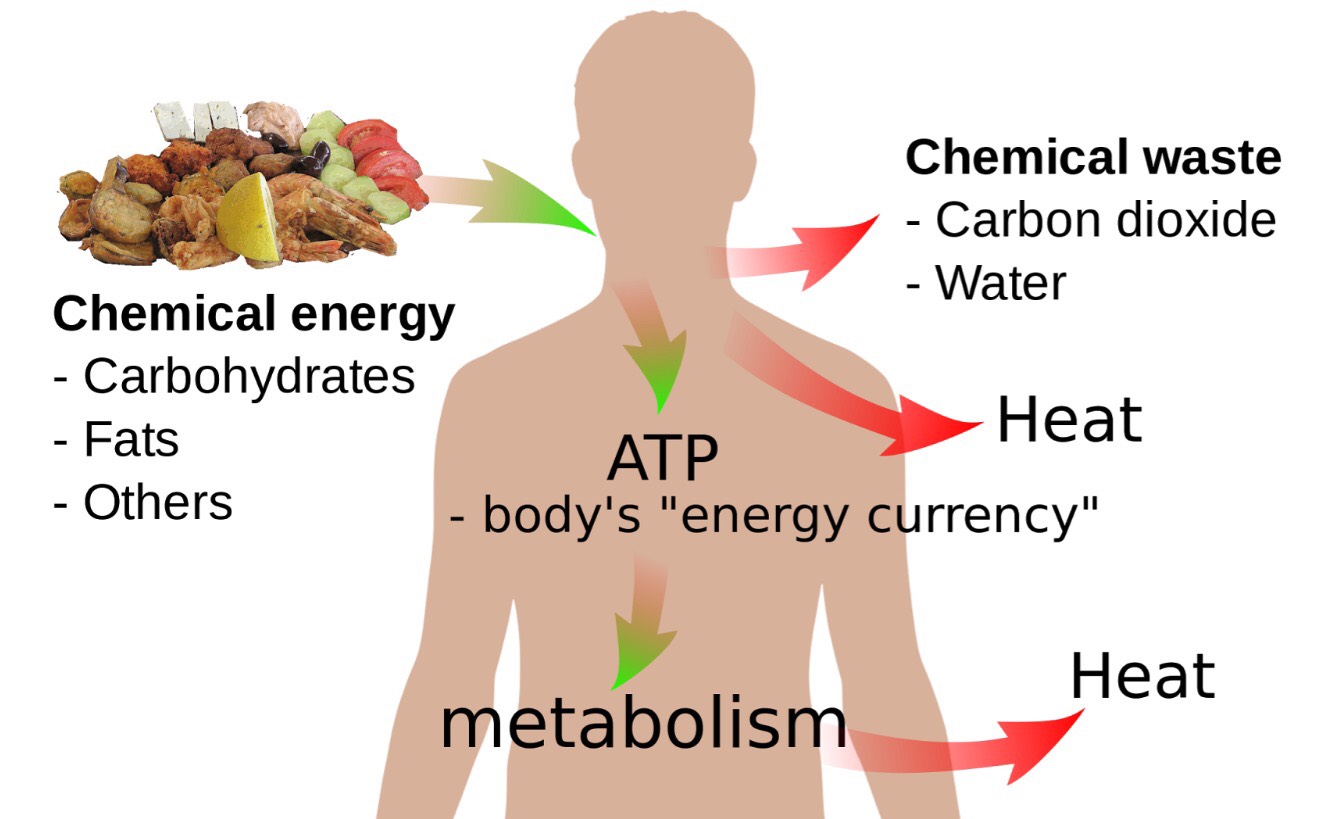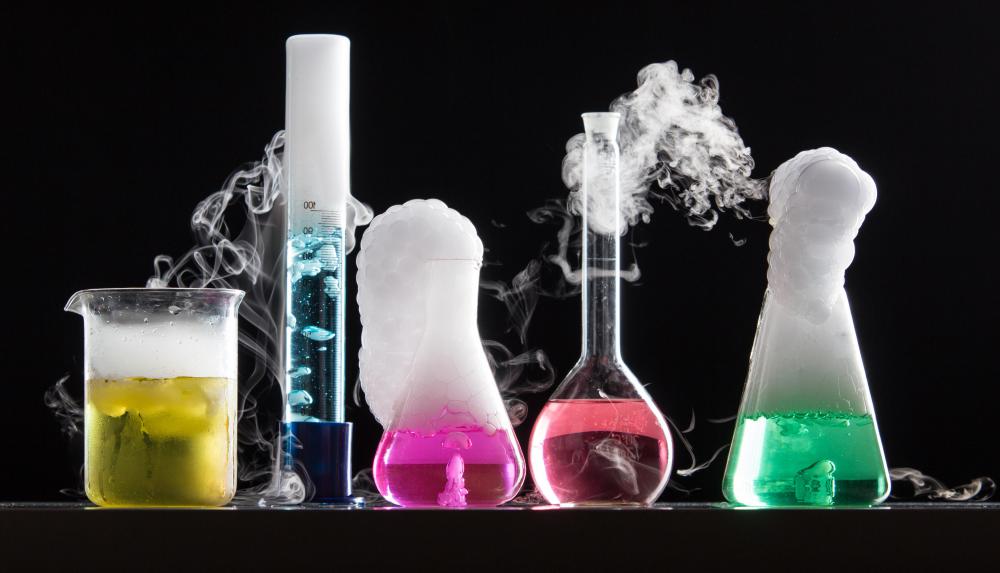What Is The Chemical Form Of Energy Used By Cells
What Is The Chemical Form Of Energy Used By Cells - Web metabolism, the sum of chemical reactions that take place in living cells, providing energy for life processes and the synthesis of cellular material. A cell’s metabolism refers to the combination of chemical reactions that take place within it. Web updated on september 25, 2019 chemical energy is the energy stored within chemicals, which makes its energy inside atoms and molecules. Web the main categories are sugars, fatty acids, amino acids, and nucleotides. Chemical energy is responsible for. Web photosynthesis is the process in which light energy is converted to chemical energy in the form of sugars. In animals the energy is stored as a glycogen. Web the energy released by cellular respiration is temporarily captured by the formation of adenosine triphosphate (atp) within the cell. Some of these chemical reactions are. Web show details metabolic energy many tasks that a cell must perform, such as movement and the synthesis of macromolecules, require energy.
Chemical energy is responsible for. A large portion of the cell's. Web the synthesis of the many molecules in a functioning cell creates a need for energy in the cell. Some of these chemical reactions are. A cell’s metabolism refers to the combination of chemical reactions that take place within it. Web metabolism, the sum of chemical reactions that take place in living cells, providing energy for life processes and the synthesis of cellular material. Web the main categories are sugars, fatty acids, amino acids, and nucleotides. Web updated on september 25, 2019 chemical energy is the energy stored within chemicals, which makes its energy inside atoms and molecules. Web photosynthesis is the process in which light energy is converted to chemical energy in the form of sugars. Web the type of potential energy that exists within chemical bonds, and is released when those bonds are broken, is called chemical energy.
Web the type of potential energy that exists within chemical bonds, and is released when those bonds are broken, is called chemical energy. Chemical energy is responsible for. Web the energy released by cellular respiration is temporarily captured by the formation of adenosine triphosphate (atp) within the cell. Some of these chemical reactions are. Web photosynthesis is the process in which light energy is converted to chemical energy in the form of sugars. Web cellular processes such as the building and breaking down of complex molecules occur through stepwise chemical reactions. In animals the energy is stored as a glycogen. A large portion of the cell's. Web show details metabolic energy many tasks that a cell must perform, such as movement and the synthesis of macromolecules, require energy. Web cells perform the functions of life through various chemical reactions.
10 Types of Energy and Examples
It can be thought of as the main energy currency of cells, much as money is the main economic currency of. Some of these chemical reactions are. Web cells store energy in the form of adenosine triphosphate or atp. A large portion of the cell's. Chemical energy is responsible for.
Electrochemical cell in 2021 Electrochemistry, Chemistry lessons
A large portion of the cell's. Web in cellular respiration, electrons from glucose move gradually through the electron transport chain towards oxygen, passing to lower and lower energy states and releasing energy. Atp is the principle form of stored energy. Web during the light reactions of photosynthesis, energy is provided by a molecule called adenosine triphosphate (atp), which is the.
ENERGY on emaze
Web photosynthesis is the process in which light energy is converted to chemical energy in the form of sugars. Web the energy released by cellular respiration is temporarily captured by the formation of adenosine triphosphate (atp) within the cell. Web cellular processes such as the building and breaking down of complex molecules occur through stepwise chemical reactions. Atp is the.
What Is Chemical Energy? Definition and Examples
Web cellular processes such as the building and breaking down of complex molecules occur through stepwise chemical reactions. Web metabolism, the sum of chemical reactions that take place in living cells, providing energy for life processes and the synthesis of cellular material. Web show details metabolic energy many tasks that a cell must perform, such as movement and the synthesis.
6 Why Is Atp An Example Of Chemical Potential Energy Wasfa Blog
Web during the light reactions of photosynthesis, energy is provided by a molecule called adenosine triphosphate (atp), which is the primary energy currency of. Atp is the principle form of stored energy. Web adenosine triphosphate, or atp, is a small, relatively simple molecule. Web metabolism, the sum of chemical reactions that take place in living cells, providing energy for life.
CHEMICAL ENERGY SOURCES (Fuels) Material cum Notes PDF Download
Atp is the principle form of stored energy. Web adenosine triphosphate, or atp, is a small, relatively simple molecule. A cell’s metabolism refers to the combination of chemical reactions that take place within it. It can be thought of as the main energy currency of cells, much as money is the main economic currency of. Sugars are a primary source.
Define Chemical Energy In Science DERIFIT
Web the type of potential energy that exists within chemical bonds, and is released when those bonds are broken, is called chemical energy. Web cellular processes such as the building and breaking down of complex molecules occur through stepwise chemical reactions. Web the energy released by cellular respiration is temporarily captured by the formation of adenosine triphosphate (atp) within the.
Bio 3 How Cells Harvest Chemical Energy YouTube
Web cells perform the functions of life through various chemical reactions. Web photosynthesis is the process in which light energy is converted to chemical energy in the form of sugars. Web adenosine triphosphate, or atp, is a small, relatively simple molecule. Sugars are a primary source of chemical energy for cells and can be incorporated into polysaccharides. In animals the.
What is a Chemical Change? (with pictures)
A cell’s metabolism refers to the combination of chemical reactions that take place within it. Web photosynthesis is the process in which light energy is converted to chemical energy in the form of sugars. Web during the light reactions of photosynthesis, energy is provided by a molecule called adenosine triphosphate (atp), which is the primary energy currency of. Web the.
12 Examples of Chemical Energy
Some of these chemical reactions are. In a process driven by light energy, glucose molecules (or other sugars). Web cellular processes such as the building and breaking down of complex molecules occur through stepwise chemical reactions. Web photosynthesis is the process in which light energy is converted to chemical energy in the form of sugars. Web cells perform the functions.
It Can Be Thought Of As The Main Energy Currency Of Cells, Much As Money Is The Main Economic Currency Of.
Sugars are a primary source of chemical energy for cells and can be incorporated into polysaccharides. In animals the energy is stored as a glycogen. Atp is the principle form of stored energy. Web the main categories are sugars, fatty acids, amino acids, and nucleotides.
A Large Portion Of The Cell's.
Web updated on september 25, 2019 chemical energy is the energy stored within chemicals, which makes its energy inside atoms and molecules. In a process driven by light energy, glucose molecules (or other sugars). Some of these chemical reactions are. Web cellular processes such as the building and breaking down of complex molecules occur through stepwise chemical reactions.
Web Show Details Metabolic Energy Many Tasks That A Cell Must Perform, Such As Movement And The Synthesis Of Macromolecules, Require Energy.
Web adenosine triphosphate, or atp, is a small, relatively simple molecule. Chemical energy is responsible for. A cell’s metabolism refers to the combination of chemical reactions that take place within it. Web metabolism, the sum of chemical reactions that take place in living cells, providing energy for life processes and the synthesis of cellular material.
Web The Synthesis Of The Many Molecules In A Functioning Cell Creates A Need For Energy In The Cell.
Web the energy released by cellular respiration is temporarily captured by the formation of adenosine triphosphate (atp) within the cell. Web in cellular respiration, electrons from glucose move gradually through the electron transport chain towards oxygen, passing to lower and lower energy states and releasing energy. Web cells perform the functions of life through various chemical reactions. Web cells store energy in the form of adenosine triphosphate or atp.
/main-energy-forms-and-examples-609254-v3-5b562a0cc9e77c0037514831.png)



/example-of-chemical-energy-609260-final-bbb1d1f37ef443ad82bc2f2cdb2646ce.png)




/example-of-chemical-energy-609260-final-bbb1d1f37ef443ad82bc2f2cdb2646ce.png)